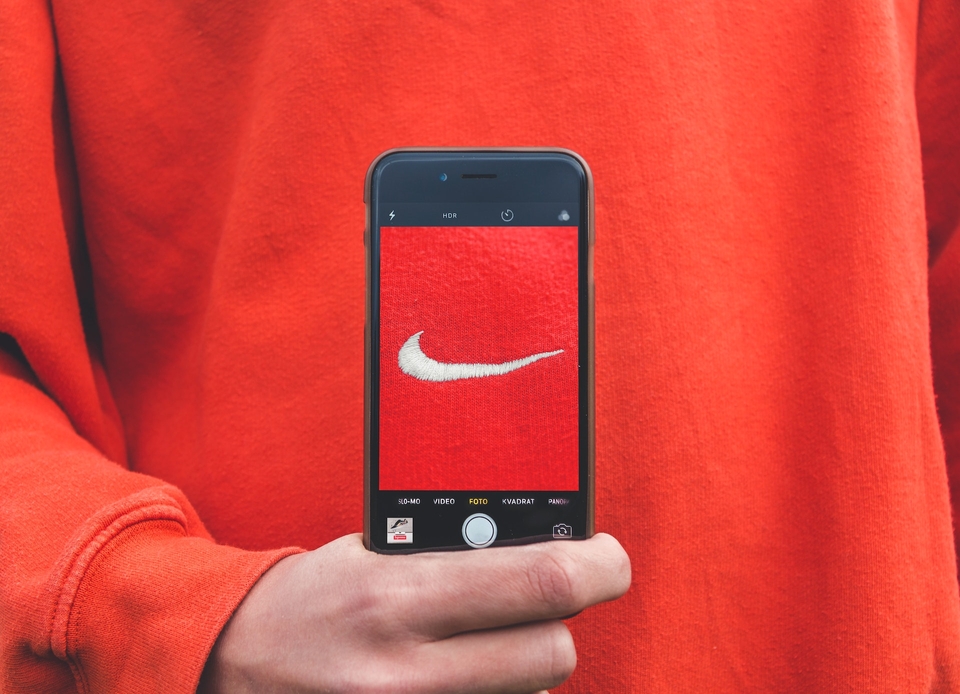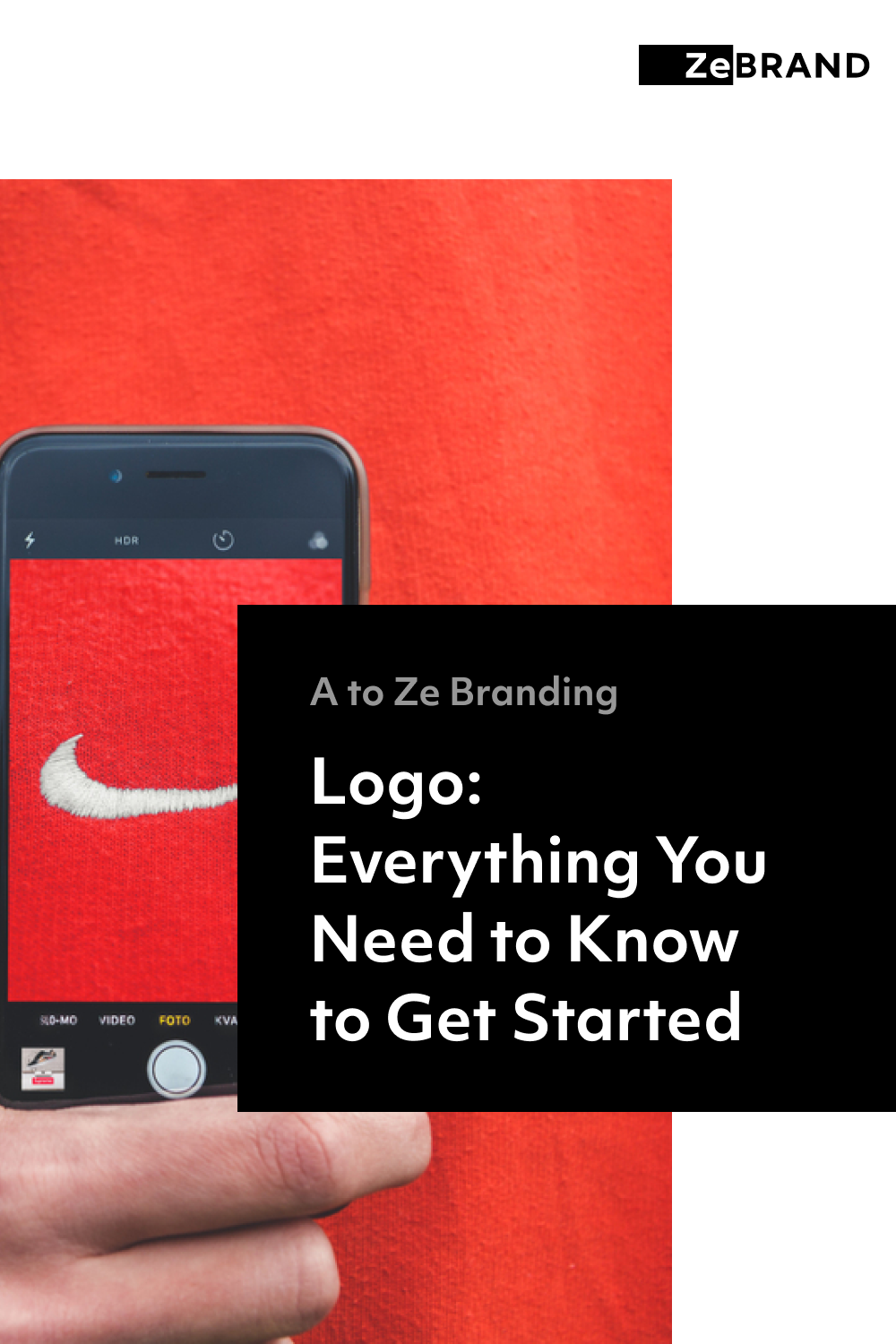Logo: Everything You Need to Know to Get Started

When you start designing your logo, it’s important to have a concept for it. But before that, you must have a reasonable understanding of your brand.
What is a logo?
Getting right down to the basics, a logo is a symbol that helps represent and identify a brand. It is typically made up of images and text. A good logo will of course be more than just that, showing what your company does and what its values are.
Why is a logo important?
Before going into what makes a logo great, let’s first consider the purpose and function of a logo - for your startup, small business, or even for you as an individual.
A logo can often be the first encounter a customer has with your company. It’s an opportunity to leave a memorable first impression. This first impression can go on to influence how a customer interacts with your brand in the future.
That may sound like a lot of responsibility for a small visual. But then again, a logo has the potential to influence how someone perceives your business, so it is an important responsibility.
What makes a great logo?
A great logo showcases your business’ identity, mission and ideals. It is simple yet distinctive. It is designed with a sound concept in mind. It is also practical – suitable for all sizes and ideally effective in any color.
How can a logo empower your business?
Think of your brand’s logo as an integral part of your startup or business’ identity from inception to maturity and beyond. A logo can help your business in many ways.
Your logo as an external mascot
- Your logo can represent your brand externally: Your logo will appear in several places – mails, advertisements, marketing campaigns, merchandise, etc. When partners or customers see it, they will associate it with your business.
- A logo can be a good tool for brand recognition: Over time, just the image of your logo can lead to customers recognizing your brand. Consider brands like Amazon, Nike and Starbucks and how an image of their logo instantly brings their brands to mind – brand recall at its finest.

Photo by Szymon12455 on Unsplash
Your logo as an internal catalyst
- Align your team: Particularly when you are a startup, a logo can help bring your team together, so they are aligned with your company’s goals and values.
- Build a connection with your employees: Good logos have the power to build emotional connections. This is true for your employees too. Having a great logo with a powerful mission statement behind it can motivate employees to go above and beyond.
Source: Pexels
What you should consider when designing a logo
Logo design requires a mix of concept, design and creativity. Given that your logo will play such a paramount role in all aspects of your business, here are some key tips and considerations to get you started on arriving at the perfect logo.
Conceptualizing your logo
When you start designing your logo, it’s important to have a concept for it. But before that, you must have a reasonable understanding of your brand. Here is a handy list of questions you should think about:
・What are some words that best describe your brand? Make a list of the keywords that best describe what your business does.
・What is your brand called? Not all logos suggest what the company behind does (eg. Shell), but this is still valuable information to use while creating a logo concept.
・What is your brand personality? Think about the kinds of attributes that can be associated with your brand. This could be related to your brand purpose or even be the personality of your founder.
・What is your brand’s target audience? Are you targeting women aged 30 – 45? Young adults? Your logo should reach your brand’s core target audience.
・What is your brand’s mission statement? Expressing this in a clear way can help you think about what logo would best suit your business.
Visualizing your logo
Once you arrive at a robust concept for your logo, it’s time to tie this to more visual elements so your brand’s logo can come to life.
Symbolism
Symbols can intuitively show a brand’s values and purpose. Tour de France has a hidden cyclist in its logo. Baskin Robbins shows the breadth of their variety in ice cream flavors (31). Quicksilver’s logo shows a famous Japanese woodblock print (The Great Wave off Kanagawa).

A study by Harvard Business Review have shown that a logo’s simplicity or complexity can influence the funding decisions that investors make.
Getting a brand logo’s symbolism right can allow for changes to its more surface elements (color, typeface, etc.) at a later stage if you desire. A logo full of symbolism can be difficult to get right and requires some labor but can have plenty of advantages down the line.
Shape
Shapes have a surprisingly big influence on our subconscious. Different shapes are said to denote different meanings. Shape psychology is a science which involves studying how shapes influence people.
Several years of study have helped professionals make sense of how shapes impact people. For instance, triangles are said to denote stability, circles represent a positive emotion and horizontal lines exude calmness. A recent piece of research by Hong Kong Polytechnic University showed that consumers link circular logos to ‘soft’ mental images and angular logos to ‘hard’ images.
Many businesses have used shapes to communicate various aspects of their brands successfully. The Olympic rings demonstrate inclusivity. Mitsubishi Motors’ logo uses triangles effectively to show power. SoundCloud uses vertical lines in its logo to show creativity. Think about what shapes best fit your brand’s mission statement.
Photo by Kasper Rasmussen on Unsplash
Color
Color can play a large role in helping shape your brand. A vibrant color like Nickelodeon’s orange can show off a brand’s dedication to entertainment and symbolize its youthfulness.
Research has shown that people make a subconscious decision about a product within 90 seconds of seeing it. Between 62% and 90% of this assessment is based on color.
A brand logo appears in various places, often in print, so the logo also needs to work in black and white. Some businesses choose to have more versatility, wanting to transcend color itself by using black and white. Chanel’s iconic interlocking C’s are a great example of this. Even the simple choice of whether or not to use color for your logo can have a huge impact on your brand.
Source: Pexels
Typeface
A typeface may seem like a minor detail but can go a long way in illustrating your brand’s traits and personality. A chocolate company may choose to have a more playful font (eg. Cadbury’s) while a traditional company creating luxury goods may choose a serif font (eg. Rolex).
A study published in Cognition Today showed that creative cognition is better when the text is optimized typographically for aesthetics.
Many companies are preferring to use sans serif fonts (eg. Panasonic, Microsoft). Google famously rebranded to a sans serif font from its original serif font to become more contemporary. Specific typefaces project specific attributes so it’s important to use the one that suitably reflects your brand.
Photo by Jon Tyson on Unsplash
Summary
Although a logo may seem to be a small visual, getting it right is essential for your business.
When designing a logo, it’s important to think about a meaningful concept, together with appropriate visual elements. A great logo will showcase your business’s core identity, mission and ideals.
As an external mascot, representing your brand to partners and customers, or an internal catalyst with your own employees, a logo has the power to influence. It can change brand perception, create brand recall and even unlock new opportunities.
ZeBrand can help you on every step of your logo design journey. Find out how by watching this short video.



